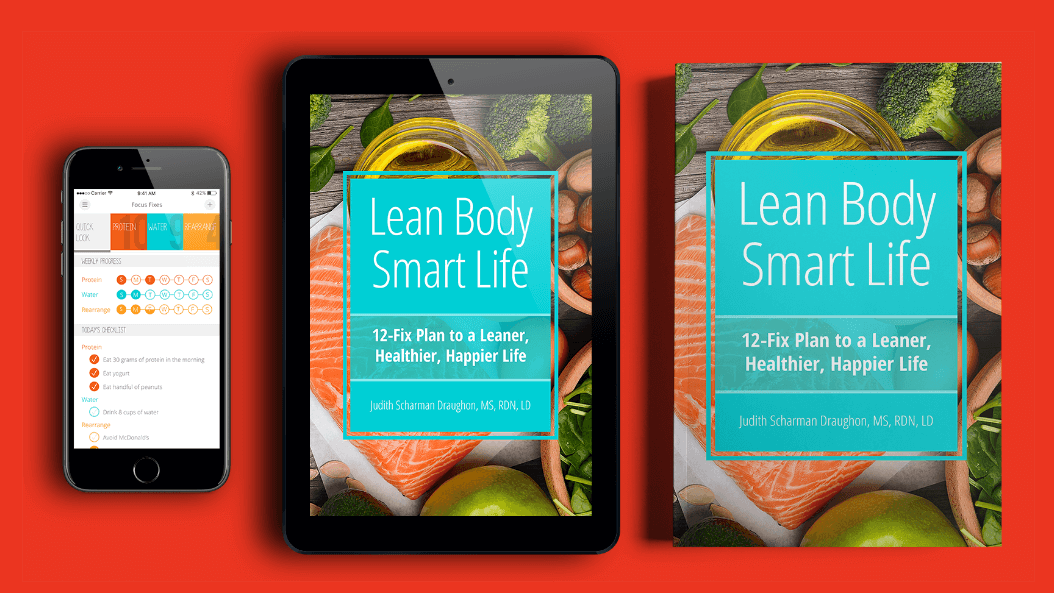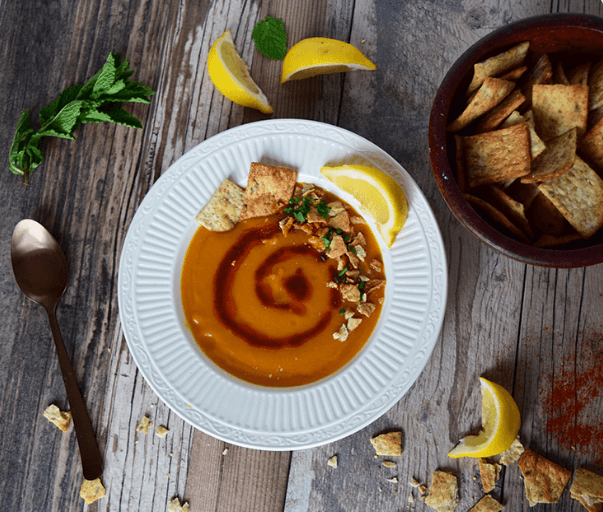Plant Chat: Judith Scharman Draughon, MS, RDN, LD and author of Lean Body, Smart Life

I am so glad to have Judith Scharman Draughon, MS, RDN, LD on my plant chat this week! As a dietitian for over 30 years who cares deeply about the taste of food, Judith “Judes” Scharman Draughon provides the newest scientific nutrition information in a nutshell and shows concrete, simple and savory solutions to help busy people and their families live healthier. She empowers many through her workshops, seminars and speaking engagements. Judith is author of Lean Body, Smart Life: 12-Fix Plan to a Leaner, Healthier, Happier Life and former instructor of nutrition and healthy cooking at Loretta Paganini’s International Culinary Arts & Science Institute. Continue reading to learn more about Judes’ latest book, nutrition philosophy, and favorite cooking techniques.

Tell us about your personal journey in the food and nutrition world.
I’ve been interested in nutrition since my junior high track days when I realized what I ate helped me perform better. When I went to college, I chose the most challenging nutrition degree available. I majored in medical dietetics which allowed me to become a registered dietitian. I went on to get a masters of science in health education and work as a clinical outpatient dietitian in Connecticut. Many adventures both personally and professionally followed but twenty-five years later, I started a private practice where I spent much of my time doing wellness speaking and helping CEOs eat healthy while juggling their crazy schedules.
What was the inspiration behind your book?
With so much nutrition information out there and so many choices, it’s hard for people to know which changes to make that will have the biggest impact on their health and weight. I was working with various clients and presenting to employees of different companies in Cleveland. I knew there was a limit of how much energy they would put into it and how much attention they would give me. Consequently, I spent a lot of time and energy researching the most important, most impactful changes people could make. I wanted to help people feel better as they enjoyed delicious food.
What is your personal nutrition and wellness philosophy?
Small is big; less is more. The small things we do each day add up to our big picture of health over time. Instead of having an all-or-nothing mindset, one can benefit from doing less exercise and have fewer food restrictions but do them most of the time rather than “all on” or “all off.” Sustainable habits are the name of the game, but aim to do them most of the time, not necessarily 100% of the time.
For instance, when I make a goal I have A, B, C and D scenarios to accommodate my schedule and my frame of mind and motivation. I can almost always get myself to run around the block but may have a hard time running five miles every day. The ironic thing is that once you run around the block, you are more likely to go a little more. Over time it becomes really easy to run around the block and plan D becomes a piece a cake. Maybe you don’t run five miles as often, but you end up running longer distances more frequently. If it’s sustainable, then you are more likely to do most of the time, the rest of your life. Ironically, just doing plan D of anything most of the time helps you make other healthy choices more often.
It’s crazy but true. Small things help us make big progress, and less is more in the long run!
Why do you think people struggle so much to eat healthfully?
People don’t realize how much better they could feel, how delicious it can taste, and how to prepare healthy food fast. In the end, we all need a few healthy meal ideas to make in our arsenal, so when we are tired and rushed, we can come up with something nourishing and healthy.

What are some of your best tips to help people find their way to a healthy, delicious lifestyle?
Lose the all or nothing mentality, so you don’t have to feel like you failed if you don’t stick to it 100% of the time. Making a change most of the time can make a significant difference to your health. Changes don’t have to be 100% of the time to be effective, yet somehow we feel that when we’re not doing them 100% of the time then that translates into FAILURE.
Also, learn how to stop eating when you are a little full so you can enjoy the rest of your food later when you are more hungry. Mindful eating helps us eat slower, enjoy the food more, and allows us time to identify our fullness level. Chew your food until it’s liquid rather than chewing a couple of times and swallowing. Most people don’t chew their food all the way before it slides down their throat. Notice if you are chewing your food thoroughly the next time you eat.
Be sure to eat lots of fruits, vegetable, nuts, beans, lentils and dried peas to take advantage of the powerful nutrients that help us stay healthy.
What are your best suggestions to encourage people to eat more whole plant foods?
When we eat food while doing other things, we end up ingesting more than we would have had we only focused on eating. This works against us if we’re snacking on potato chips or other junk food. If we’re eating vegetables, this can actually be to our benefit, however. This is especially true if junk food is out-of-sight and unavailable.
It’s like magic: if we cut it up and set it on a plate, someone will eat it. We can do this for ourselves. Spend a minute or two chopping up a vegetable that you wouldn’t normally snack on. Then put it next to you while you’re browsing the web. That vegetable will disappear. Magic.
The trick works for other people, too. Just set a plate of cut-up fruits and vegetables near them while they’re doing other things. Just in case they get hungry. Again, those fruits and vegetables will magically disappear.
When I buy pears and leave them washed on the counter, no one eats them. But if I take ten seconds to cut a pear with an apple cutter and set the slices next to my kids, then voilà: the contents of the plate magically disappear. Kids will devour the fruits and vegetables without realizing it, just because they’re there. Not only that, but after a while they start to get used to them. They realize that those pears are actually delicious. And once in a while, who knows? We might even see them grabbing one from the fruit bowl or refrigerator.
Pre-meal vegetable platter. When kids (both big and small) complain that they’re hungry, don’t let them make a beeline for the pantry. Tell them that they can eat any of the vegetables on the table, but that’s it. Be consistent. It’s either the vegetables or nothing. They make the choice, so it’s not a power struggle. They choose to eat their vegetables. This is an opportunity to put new foods to try out as well. People are a lot more likely to try new things when they’re at their hungriest and when they don’t feel like they’re being forced to eat them. It’s a good rule for adults too.
This doesn’t mean we have to put a lot of extra time and effort into cutting things up. We can buy vegetables that are already cut, or vegetables that don’t need much cutting. Sugar snap peas, baby carrots, and grape tomatoes pour right onto the plate. Cucumbers and red peppers are quick and easy to cut. Whatever we choose, I recommend having more than one type of vegetable out there so that people have more choices and more exposure. Hummus or salad dressing may be nice for encouragement at first, but as time goes on and eating vegetables becomes a habit, we can skip the dressing altogether, and the veggies will still get eaten. As previously mentioned, this is a great chance to introduce new vegetables without pressuring someone to eat them. Routinely add an unfamiliar vegetable to the mix without mentioning it. It might be surprising what gets eaten.
Serve vegetables first at mealtimes. Serving veggies before main meal dishes can make a huge difference to your family’s vegetable intake. If you serve vegetables first at mealtimes, people will eat more of them. Why? Because they’re hungrier at the start of the meal than they are at the end of it. Don’t put anything on the table to compete with the vegetable. The salad or the broccoli should go out first and alone. Add the other food only after the vegetable is gone.
What are 5 plant foods you can’t live without?
Nuts – I love the crunch, protein and healthy fats for more satisfaction. I love salad and roasted vegetables with a passion. I adore hummus with pomegranate seeds.
Please share a few easy cooking tips that people might not know about?
- Use avocado and a little white balsamic vinegar instead of mayo in egg salad.
- Raw cashews can make a great dressing to replace creamy dressings.
- Cook dried beans in a crockpot filled with water overnight on low. Add a part of a kumbo seaweed sheet to the water and then discard in the morning to get rid of the gas problem that typically goes hand-in-hand with beans. It works!
Try out one of Jude’s favorite plant-based recipes: Luscious Lentil Soup



